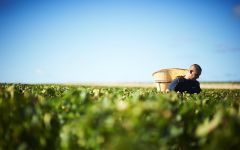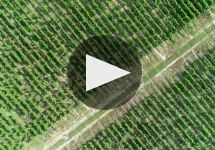Chateau d'Issan 2022
-
James
Suckling -
Jeb
Dunnuck - Decanter
-
Robert
Parker - Vinous



Product Details
Your Rating
Somm Note
Winemaker Notes
Château d’Issan is a Third Growth of the 1855 Imperial Classification. The wine is made from the old vines in the Château d’Issan enclosure in the middle of the Margaux appellation. The soil here is mainly made up of surface gravel on top of a clay subsoil, which contributes to optimal ripeness and freshness in their two grape varieties, Cabernet Sauvignon and Merlot. Château d’Issan expresses the exquisite bouquet so characteristic of Margaux, and stands out with its suppleness, subtlety, elegance and long keeping potential that come from its unique terroir. Château d’Issan is aged in barrels for 16 to 18 months, half of which are new.
Blend: 65% Cabernet Sauvignon, 30% Merlot, 2% Cabernet Franc, 2% Malbec, 1% Petit Verdot
Professional Ratings
-
James Suckling
This is really luxurious, showing blackcurrants and orange peel with cedar and dried-mushroom aromas following through to a medium to full body that grows on the palate. This has crunchy and lightly chewy tannins that are slightly austere but in an elegant, classical Bordeaux way. Chewy at the end. So much energy and vibe. So complex. Probably the greatest wine ever from here. A blend of 65% cabernet sauvignon, 30% merlot, 2% cabernet franc, 2% malbec and 1% petit verdot.
-
Jeb Dunnuck
The deep ruby/purple-hued 2022 Château D'Issan is rock star stuff, offering a massive array of red and black fruits, spring flowers, violets, smoky tobacco, and a beautiful sense of minerality. This full-bodied, powerful, concentrated Issan has a layered, seamless mouthfeel, beautiful tannins, and a great finish.
-
Decanter
Deep, heady, really quite seductive and aromatic on the nose, draws you in with bramble fruits, chocolate, exotic spices and perfumed floral nuances. Juicy and lively, pure and focussed, but such a vibrancy to this wine. Sweet and sour elements combine with really salty, chalky, powdery and quite filling tannins that give the nuance of flavour and texture. Bright yet serious, finessed yet layered. Lovely intensity of elements. On the more savoury side right now in terms of lingering flavour but there’s mouthwatering acidity giving the liveliness and sense of fun. I really like this, textured, upfront, forward, extremely drinkable and so approachable, but thrilling too. An exciting wine with great integration and finesse and still clear strength underneath. One of the most exciting wines this year. Stylish, potent and polished. I love it! A yield of 30hl/ha. Harvest 15 - 28 September. 1% PV planted in 1948, 12% press wine. 2% Malbet and 1% Petit Verdot complete the blend. Total acidity: 3.55. 50% new barrels. 3.67pH.
Barrel Sample: 96 -
Robert Parker's Wine Advocate
The 2022 D'Issan has turned out beautifully, wafting from the glass with aromas of minty cassis, rose petals, pencil shavings and vine smoke. Medium to full-bodied, suave and velvety, it's deep, complex and well-balanced, with a sweet core of fruit and ripe structuring tannins. It's a blend of 55% Cabernet Sauvignon, 30% Merlot and the balance Cabernet Franc, Malbec and Petit Verdot.
-
Vinous
The 2022 d'Issan is a potent, tightly wound wine. Gravel, incense, leather, licorice and plum fill out the layers. This deep, virile Margaux is in no mood to show its cards today. I expect it to be very slow to mature. There's a lot of wine here. Powerful tannins dominate, which is unusual considering that Issan is often more charming at the outset.
Other Vintages
2024-
James
Suckling - Vinous
-
James
Suckling -
Robert
Parker - Decanter
- Vinous
-
James
Suckling - Decanter
-
Robert
Parker -
Jeb
Dunnuck - Vinous
-
James
Suckling - Decanter
-
Jeb
Dunnuck - Vinous
-
Wine
Enthusiast -
Robert
Parker
-
James
Suckling - Decanter
-
Jeb
Dunnuck -
Robert
Parker
-
Robert
Parker -
James
Suckling - Decanter
-
Jeb
Dunnuck
-
James
Suckling - Decanter
-
Jeb
Dunnuck -
Robert
Parker
-
James
Suckling -
Wine
Enthusiast -
Jeb
Dunnuck - Decanter
-
Robert
Parker -
Wine
Spectator
-
James
Suckling -
Jeb
Dunnuck -
Wine
Enthusiast -
Robert
Parker - Decanter
-
Wine
Spectator
-
Wine
Enthusiast -
James
Suckling - Decanter
-
Jeb
Dunnuck -
Robert
Parker
-
Robert
Parker - Decanter
-
James
Suckling
- Decanter
-
Robert
Parker -
Wine
Enthusiast -
Wine
Spectator -
James
Suckling
-
Wine
Enthusiast -
James
Suckling -
Jeb
Dunnuck -
Robert
Parker -
Wine
Spectator -
Wine &
Spirits
-
Robert
Parker -
Wine
Spectator -
Wine
Enthusiast
-
Robert
Parker -
Wine
Enthusiast
-
Robert
Parker -
James
Suckling -
Wine
Spectator
-
Robert
Parker
-
Robert
Parker -
Wine &
Spirits






Château d’Issan is in the heart of the Margaux appellation, a truly privileged location, which explains the outstanding quality of its wines. The mild weather, regulated by being close to the sea and the Gironde Estuary, provides ideal conditions for vine growth. The vines at Château d’Issan benefit from close, on-going care designed to produce perfectly ripe grapes. Everything is organized so that each individual plot can be tended independently in order to get the very best out of its fruit. Château d’Issan is a Third Growth of the 1855 Imperial Classification. The wine is made from the old vines in the Château d’Issan enclosure in the middle of the Margaux appellation. The soil here is mainly made up of surface gravel on top of a clay subsoil, which contributes to optimal ripeness and freshness in our two grape varieties, Cabernet Sauvignon 65% and Merlot 35%. Château d’Issan expresses the exquisite bouquet so characteristic of Margaux, and stands out with its suppleness, subtlety, elegance and long keeping potential that come from its unique terroir.

One of the world’s most classic and popular styles of red wine, Bordeaux-inspired blends have spread from their homeland in France to nearly every corner of the New World. Typically based on either Cabernet Sauvignon or Merlot and supported by Cabernet Franc, Malbec and Petit Verdot, the best of these are densely hued, fragrant, full of fruit and boast a structure that begs for cellar time. Somm Secret—Blends from Bordeaux are generally earthier compared to those from the New World, which tend to be fruit-dominant.

Silky, seductive and polished are the words that characterize the best wines from Margaux, the most inland appellation of the Médoc on the Left Bank of Bordeaux.
Margaux’s gravel soils are the thinnest of the Médoc, making them most penetrable by vine roots—some reaching down over 23 feet for water. The best sites are said to be on gentle outcrops, or croupes, where more gravel facilitates good drainage.
The Left Bank of Bordeaux subscribes to an arguably outdated method of classification but it is nonetheless important in regards to history of the area. In 1855 the finest chateaux were deemed on the basis of reputation and trading price—at that time. In 1855, Chateau Margaux achieved first growth status, yet it has been Chateau Palmer (officially third growth from the 1855 classification) that has consistently outperformed others throughout the 20th century.
Chateau Margaux in top vintages is capable of producing red Cabernet Sauvignon based wines described as pure, intense, spell-binding, refined and profound with flavors and aromas of black currant, violets, roses, orange peel, black tea and incense.
Other top producers worthy of noting include Chateau Rauzan-Ségla, Lascombes, Brane-Cantenac, and d’Issan, among others.
The best wines of Margaux combine a deep ruby color with a polished structure, concentration and an unrivaled elegance.
